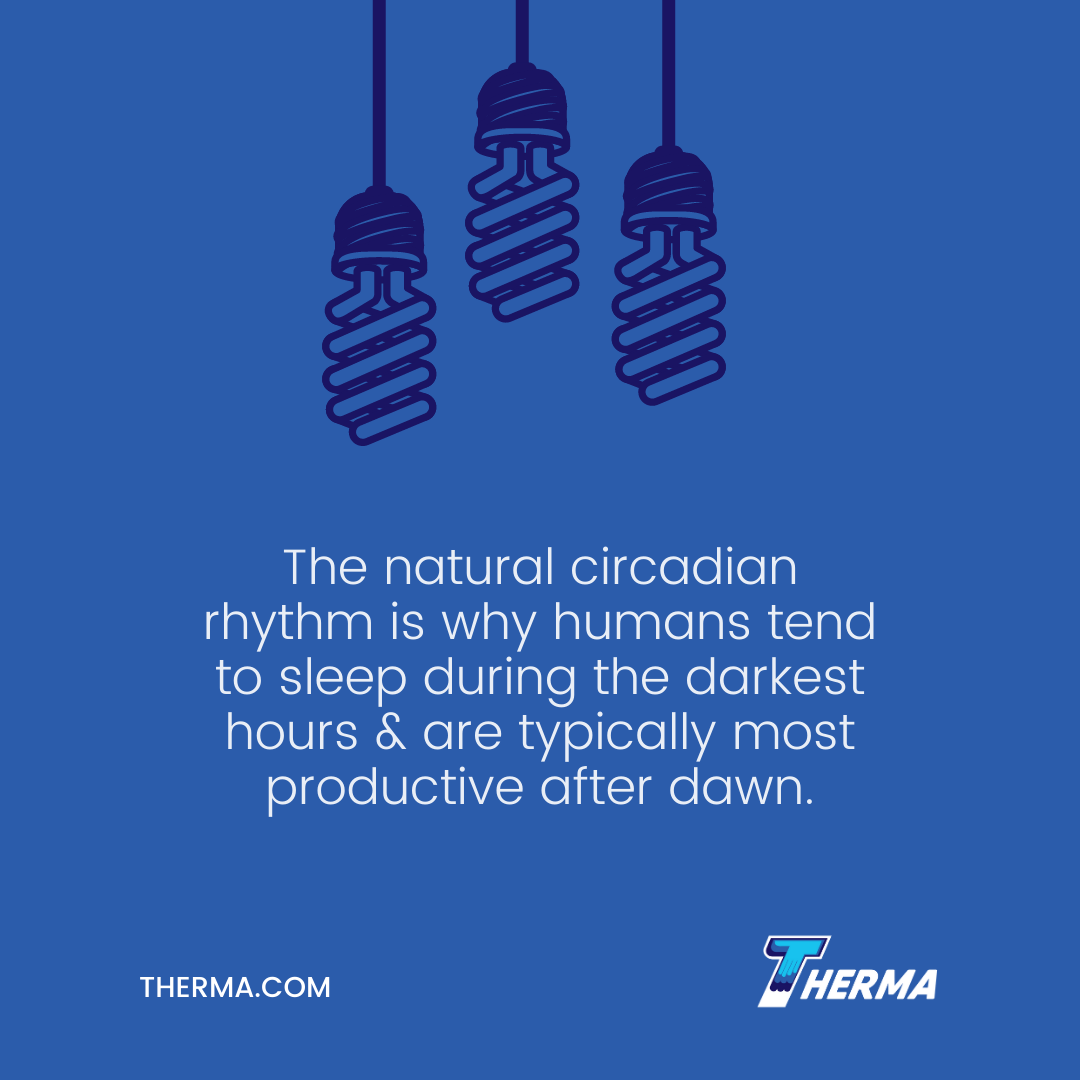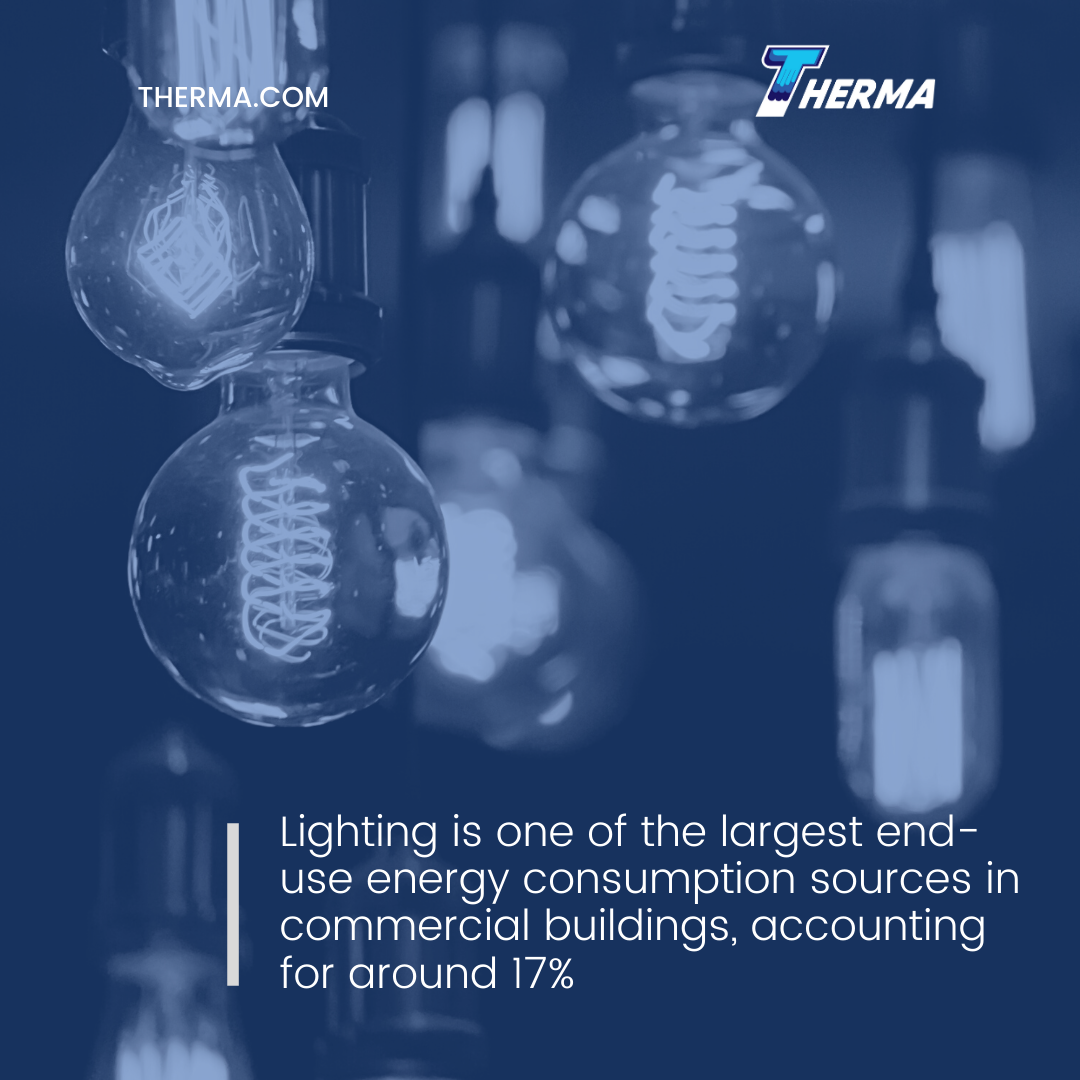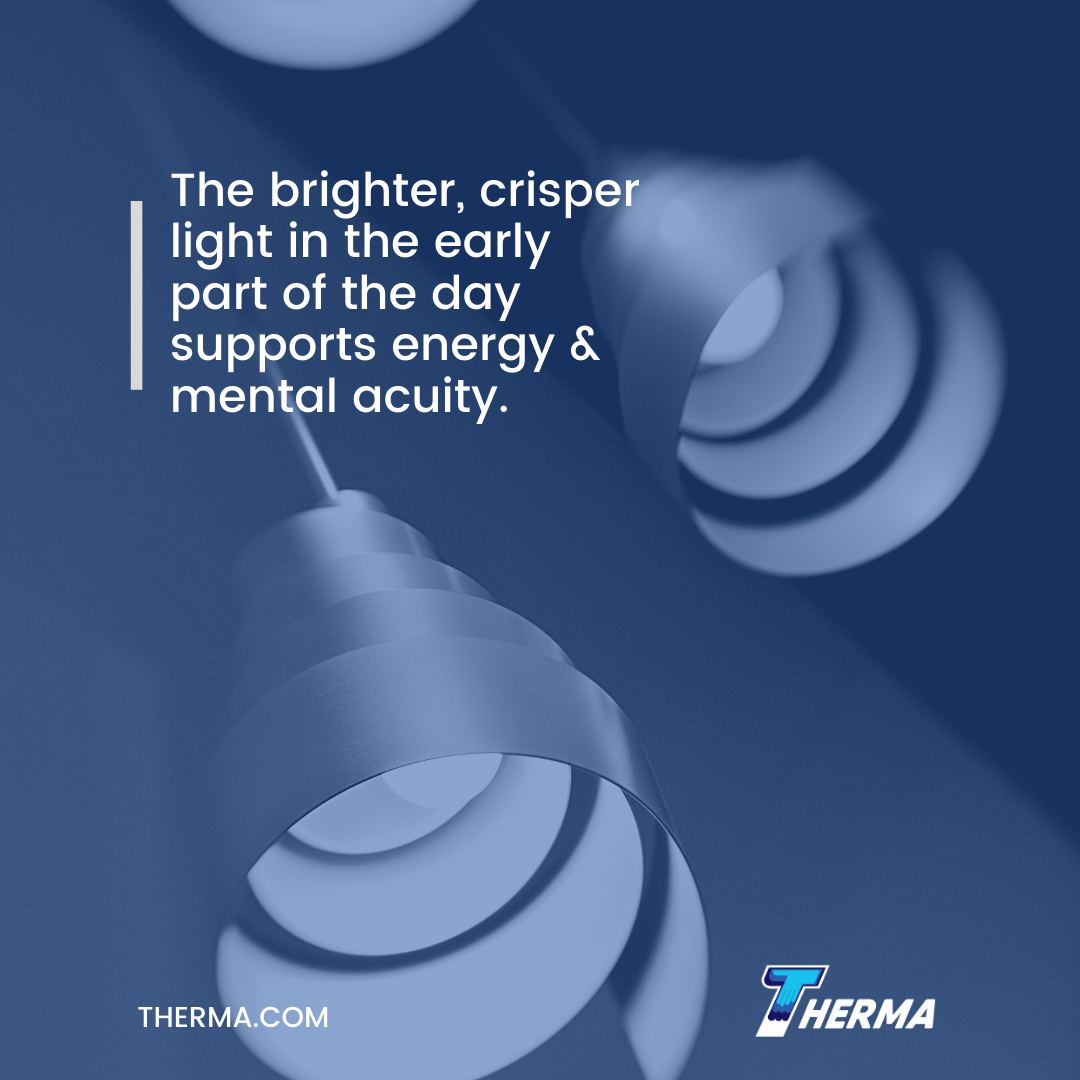Why are human-centric lighting systems important? Lighting is one of the largest end-use energy consumption sources in commercial buildings, accounting for around 17% of all electricity used.
Lighting is necessary, but for years, the focus was solely on reducing energy consumption when it came to upgrades, with little or no attention paid to how the type of lighting used was affecting building occupants.
Effects of Human-Centric Lighting Systems on Human Health
Recent research supports the concept of human-centric lighting, or HCL, which designs lighting in commercial buildings around the human body’s natural circadian rhythms. It also looks at the effect the different types of light can have on mood and productivity.
The most commonly used energy-efficient light bulbs for commercial buildings are 80 CRI LEDs, meeting minimum energy-efficiency design requirements as outlined in ASHRAE Standard 90.1 While much more efficient than incandescent light bulbs, 80 CRI LEDs pose a problem when it comes to human-centric design.
Incandescent bulbs mimic the warm glow of a flame, casting a light that is well-saturated in the red spectrum, thereby creating a softer ambiance. LED lights are oversaturated in the blue and green spectrums and undersaturated in the red spectrum, making for a brighter–but much harsher–light.
The natural circadian rhythm is why, as humans, we tend to sleep during the darkest hours and are typically most productive after dawn, during hours of sunlight.
Lighting can affect circadian rhythms by throwing off our 24-hour cycle. People who work in brightly lit offices late into the evening can emerge feeling jittery and can often find it challenging to settle naturally into an evening routine. They can also encounter significant sleep disruptions, further impacting their overall health and wellbeing.
The Science of HCL
In 2017, Jeffrey C. Hall, Michael Rosbash and Michael W. Young shared the honor of the Nobel Prize in Physiology or Medicine for their work concerning circadian rhythms, including the effect of light on biological clocks. Our inner clocks are responsible for enhancing physiology during different phases of the day, regulating sleep, body temperature, metabolism, hormone levels and even behavior.
Our wellbeing is disrupted when there are mismatches or disconnects between external environments and the internal biological clocks. Disruptions in location (crossing time zones, jet lag) and light exposure (disrupting the body’s “knowledge” of what time of day it is) can cause chronic misalignment of the circadian rhythm.

Benefits of Incorporating Human-Centric Lighting Systems
Buildings that incorporate HCL concepts can provide a better environment for building occupants. Facilities that can specifically benefit from HCL include:
- Schools or daycares
- Medical facilities
- Senior living centers or nursing homes
- Office spaces
- Retail environments
- Warehouses
By using lighting that allows the workday to begin with blue-white light and then shifts to amber tones in the afternoon, building owners can make their facilities more welcoming, helpful and productive for occupants.
The brighter, crisper light in the early part of the day supports energy and mental acuity, sliding into calm yet alert tranquility as the sun goes down outside. Using light that the body instinctively knows to be in sync with morning or afternoon hours can also enhance visual acuity and visual comfort, while improving productivity and mood.
Investing in HCL
If you’re considering in HCL technology, consider these points:
Can the System be Automated?
Look for systems that incorporate automatic changes in lighting throughout the day, switching gradually and seamlessly from one spectrum to another. This helps to avoid abrupt changes in lighting or the need to shift lighting tones manually.
Is the System Future-Proof?
Retrofitting with smart lighting can be accomplished by selecting a system that has a simplified configuration, is scalable and won’t become obsolete in the next decade. Look for adaptability, thinking 15-20 years down the road before deciding to purchase.
Are the System Controls Easy to Use?
The user experience is crucial and should be considered part of the design. Ideally, lighting will be fully automated and connected to the building management system. Using the Internet of Things (IoT), sensors can track usage and efficiency and complete predictive maintenance to help keep your system working at optimal capacity.
Will Real Daylight be Available?
Buildings with inner zones that offer no natural light will require more control than areas that have exposure to natural daylight. For example, you may consider including the addition of skylights to provide steady, dependable light in line with local conditions. Working with a LEED accredited engineer as part of your building and design team can help you take advantage of all the daylight possible.
HCL could be the secret to healthier, more productive workforces. While there is still much to learn about this emerging field, investing in HCL could be a move toward the smarter building you’ve been looking for.









